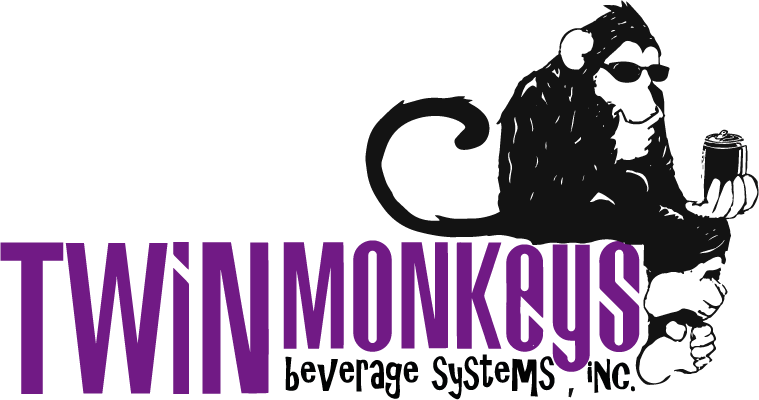The global beer market was $743.84 billion in 2020, and with no signs of slowing down, it is projected to grow to $989.48 billion in 2028.
Each year, more American breweries open. In fact, the number of brewing companies increased from 4,847 in 2015 to 8,884 in 2020. Based on this growth, there’s more competition than ever, and to win beer drinkers’ attention, breweries need to do more than develop a quality product. As shelf space grows, breweries need to ensure their cans stand out, which is why a beer’s label design is so crucial.
A beer label draws consumers in, so it’s essential to invest in this critical step of the development phase.
Here’s why custom labels matter and the most important considerations.
Have a Brewing Company? Here’s Why Branding Matters
Breweries have one primary objective — make great beer. However, delicious beer is only half the battle in today’s highly competitive world.
Most consumers will quickly lose interest if a brewing company lacks creative branding and a thorough marketing strategy.
As of 2017, it’s estimated that a new brewery opens daily, which means breweries must develop a compelling brand story, which is then marketed on every can they produce. Of course, there’s plenty to consider when creating a market strategy, but when the core focus is how consumers perceive a brand in-store, there are few things as vital as labeling.
An interesting label design could be the difference between someone picking up that beer or wanting to try the one beside it instead.
How Custom Labels Help Beer Stand Out In-Store
How can something as simple as a label make a can stand out to beer drinkers? How is it that a label design can sell more beer?
Humans are highly visual beings. It takes only 13 milliseconds for the human brain to process an image, so beer drinkers are more inclined to pick up the product with an attention-grabbing label.
The key is to understand the target audience and remain true to the brand. This approach allows breweries to promote their unique brand personality to connect with consumers. Beer drinkers often gravitate toward beer and packaging that resonates with their personality. The same is true for seasonal brews. A summer beer label should match the vibes and moods associated with summer. For example, summer beer labels are often bright, vibrant, and fun.
Related: What to Consider When Running a Canning Line in Hot Weather
When developing labels, a brewing company should narrow down three to five personality traits that represent the brand. From relaxing to outgoing, it’s critical to stick to these traits. The more time and care put into a label, the more it shows the consumer they can expect a quality product inside. Thoughtful label design and planning marries the beauty of a label with the care that went into making the beverage inside.
3 Tips to Differentiate Your Cans From Competitors
It’s clear that beer labels matter, but how do you ensure your labels are worthy of buyers’ attention?
The answer is fairly simple. Embrace customization, showcase who you are as a unique brand, and adapt along the way. Here are three tips to get you started.
Tip 1: Choose a Theme
It’s not uncommon for breweries to choose a central theme and then develop custom labels for each beer they offer. You can customize each can while remaining consistent with branding. In some cases, this means creating different labels for different beer styles. In other cases, breweries make various labels for the same beer style within a series of rotating brews. For example, War Horse Brewing created cans that many fans have collected. This series was inspired by Andy Warhol and printed on their Change IPA series.
Tip 2: Consider Your Target Consumer
Do you offer your beer in local stores only? If so, your branding may heavily revolve around geographic imagery. Whether that means designs representing your state, city, or town, this imagery will speak to those purchasing your beers. Unita Brewing is a prime example of a brewery that creates labels that speak to those from Utah and live a certain “chill” lifestyle — particularly those who love the outdoors.
Whenever you’re creating a beer label, consider the following:
- What kind of personality traits does our target drinker have?
- How and where are they buying our beer?
- How do we want our beer labels to make them feel? Nostalgic? Patriotic? Inspired?
Tip 3: Always Dare to Be Different
The name of the game here is to be different. Study your competitors and stay away from what they’re doing — carve out your own niche.
Some ways to differentiate your labels include:
- Coloration — Color plays a key role in attracting consumers. You’ll also want to stick to colors that represent your brand.
- Typography — In addition to your brewery’s logo, you should include unique typography. Keep the text short and sweet, telling a fun or interesting story about the beer inside the can.
- Material — Most labels are printed on coated paper, but that doesn’t mean your labels need to follow suit. There are plenty of options to create varying textures or looks. Matte vs. glossy is just one example.
- Imagery — This is perhaps the most important consideration. Always remain true to your brand and create imagery that stands out. When beer drinkers eventually see a new label, they should make the connection to your brewing company based on your imagery style.
It’s Time to Innovate
Are you feeling inspired?
Now is the time to run with all those creative label designs you’ve been saving for a rainy day.
If you’d like to take this process to the next level, you can invest in your own in-house tabletop or standard labeler. Learn more by contacting us today!







